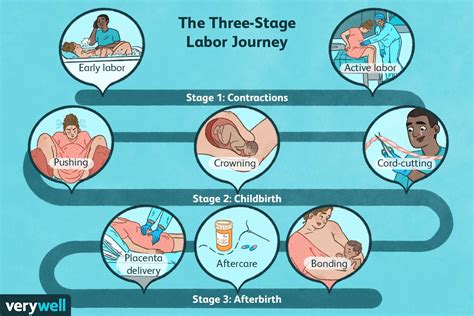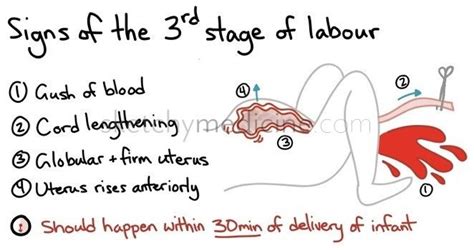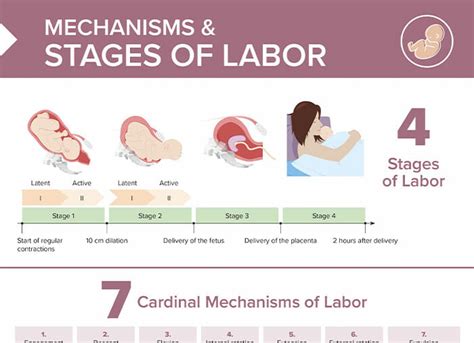Intro
Understand the stages of labor, from early labor to delivery, including latent, active, and transitional phases, and postpartum care, to navigate childbirth with confidence and prepare for a smooth labor process.
The process of giving birth is a complex and highly individualized experience for each woman. It is a time of great physical and emotional change, and understanding the different stages of labor can help expectant mothers feel more prepared and in control. Labor is a natural process, but it can be unpredictable, and knowing what to expect can make a big difference in the overall experience. In this article, we will delve into the different stages of labor, exploring what happens during each stage, and providing tips and advice for navigating this life-changing event.
The journey of labor is unique to each woman, and while some may experience a quick and easy delivery, others may face a longer and more challenging process. Despite the differences, there are certain commonalities that all women experience during labor, and understanding these can help make the process less intimidating. From the early signs of labor to the final push, each stage of labor presents its own set of challenges and opportunities for growth. By exploring these stages in depth, expectant mothers can gain a deeper understanding of their own bodies and the incredible process of giving birth.
For many women, the prospect of labor can be daunting, and it is common to feel a mix of emotions, from excitement and anticipation to fear and anxiety. However, with the right support and guidance, women can approach labor with confidence and positivity. By learning about the different stages of labor, expectant mothers can feel more empowered and prepared, knowing what to expect and how to navigate each stage. Whether it's a first pregnancy or a subsequent one, understanding the stages of labor can make a significant difference in the overall birth experience.
First Stage Of Labor

Early Labor
Early labor is the beginning of the labor process, and it's characterized by mild contractions that may feel like menstrual cramps or a tightening sensation in the abdomen. During this phase, the cervix starts to dilate and efface, and the body begins to prepare for the birth of the baby. Women may experience a range of symptoms, including back pain, nausea, and vomiting, as well as a bloody show or a burst of energy. It's essential to stay calm and focused during early labor, as it can be a time of great uncertainty and anxiety.Active Labor

Second Stage Of Labor

Pushing Techniques
There are several pushing techniques that women can use to help the baby move down the birth canal. These include deep breathing, relaxation, and positioning, as well as using gravity to help the baby move down. Women can also use vocalizations, such as moaning or grunting, to help release tension and push more effectively. It's essential to work with a healthcare provider or support person to find the most effective pushing technique and to ensure a safe and successful delivery.Third Stage Of Labor

Placenta Delivery
The delivery of the placenta is an important part of the labor process, as it helps to prevent bleeding and promote healing. Women may experience a range of sensations during this phase, including mild contractions, a sensation of the placenta separating from the uterus, and a feeling of relief and accomplishment. It's essential to follow the instructions of the healthcare provider and to stay relaxed and calm during this phase, as it can help to ensure a safe and successful delivery.Fourth Stage Of Labor

Postpartum Care
Postpartum care is an essential part of the labor process, as it helps to promote healing, recovery, and bonding with the baby. Women may experience a range of physical and emotional sensations during this phase, including bleeding, cramping, and a feeling of exhaustion. It's essential to stay hydrated, rested, and supported during this phase, as it can help to promote healing and recovery. Women can also use this time to bond with their baby, establish breastfeeding, and receive support and guidance from healthcare providers and loved ones.What are the signs of labor?
+The signs of labor include contractions, back pain, nausea, vomiting, and a bloody show. Women may also experience a range of physical and emotional sensations, including a feeling of restlessness, anxiety, and excitement.
How long does labor typically last?
+Labor can last anywhere from a few hours to several days, depending on the individual and the progression of labor. The average length of labor is around 12-24 hours for first-time mothers and 6-12 hours for subsequent pregnancies.
What are the different stages of labor?
+The different stages of labor include the first stage (early labor, active labor, and transition), the second stage (pushing), the third stage (delivery of the placenta), and the fourth stage (postpartum). Each stage has its own unique characteristics and challenges, and understanding these can help women navigate the labor process with confidence and positivity.
In conclusion, the stages of labor are a complex and highly individualized process, and understanding each stage can help women feel more prepared and in control. By learning about the different stages of labor, women can gain a deeper understanding of their own bodies and the incredible process of giving birth. Whether it's a first pregnancy or a subsequent one, understanding the stages of labor can make a significant difference in the overall birth experience. We invite you to share your thoughts, experiences, and questions about the stages of labor in the comments below, and to explore our other resources and articles on pregnancy, childbirth, and parenting.
